During the Cretaceous period, ankylosaurids abounded in Asia even more than they did in North America, with some of the more notable genera being Gobisaurus, Jinyunpelta, Liaoningosaurus, Minotaurosaurus, Saichania, Tarchia, and the subject of this review, Pinacosaurus. Pinacosaurus inhabited China and Mongolia around 75-80 million years ago, and whereas its North American relatives like Ankylosaurus and Scolosaurus lived mainly in rich green forests and swamps, it wandered the sandy semi-deserts. And it clearly did so very successfully, because there are more fossil remains of Pinacosaurus than there are for any other ankylosaur. Many of these specimens are juveniles, which may have banded together for safety.
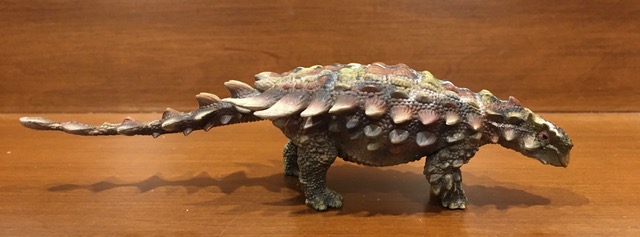
Meet Bart the Pinacosaurus, one of a great many new prehistoric toys released in 2021 by PNSO. He is sculpted with his left hind limb stretched back and his tail swaying slightly to the right, as though he is ambling slowly across the hot sands in search of an oasis to quench his thirst, and perhaps get a bite or two to eat. He measures about 17.5 cm long and slightly over 6 cm wide, which makes him one of the smaller PNSO ankylosaurs, albeit still of respectable size.
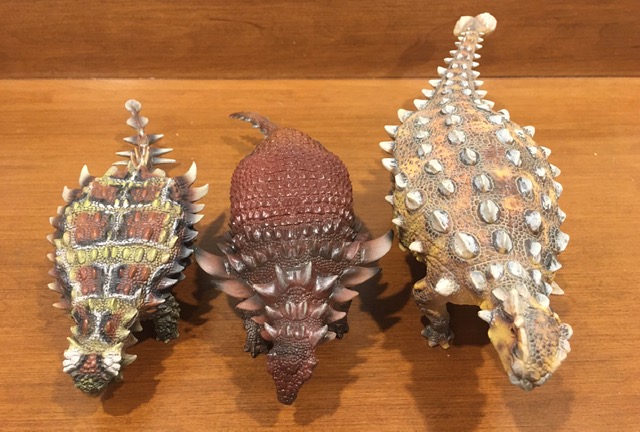
Ankylosaur toys have historically had a tendency to be rather bland in colour, but Bart is a notable exception. PNSO appears to have taken a page out of Creative Beast Studio’s playbook in basing his colour scheme on an extant animal: the Australian thorny devil or moloch. Bart’s back is decked out in an alternating pattern of black, reddish-brown, and pale olive green with thin white stripes for good measure. His pink-lined eyes are glossy black and his beak is splashed with light brown. His limbs are mostly dull dark green and his underbelly is greyish-green along with some faint brown around his joints and on his cloaca. Finally, his claws, the tips of the many scutes running along his flanks and tail, and the club at the very end are beige. Granted, Bart is still a long way what you’d call vibrant, but he’s one of the most colourful PNSO toys to date.
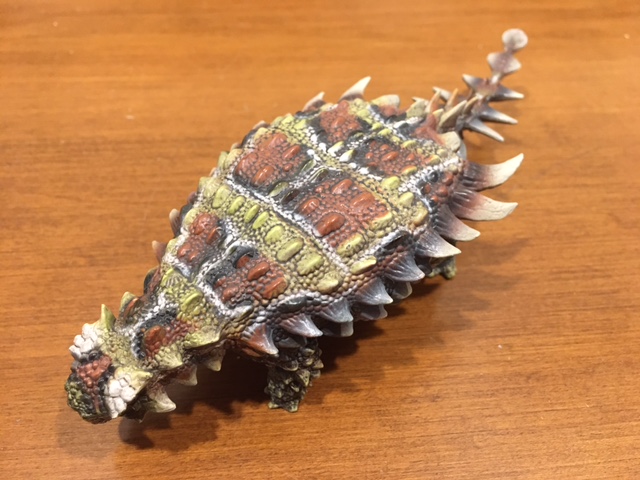
Looking at Bart’s skull, with its prominent brow ridges, squamosal, jugal, and even mandible horns, he appears to represent the type species Pinacosaurus grangeri as opposed to P. mephistocephalus. His mouth is firmly shut, which could be seen as something of a missed opportunity. A 2015 study on a juvenile specimen found that it possessed a complex tongue bone apparatus, thereby indicating a powerful, possibly even prehensile tongue to help make up for its weak dentition. It might have been very nifty had Bart been sculpted with his tongue protruding from his mouth in the act of gathering food. Ah well, perhaps CollectA or Safari will give us an ankylosaur toy with this intriguing feature someday.
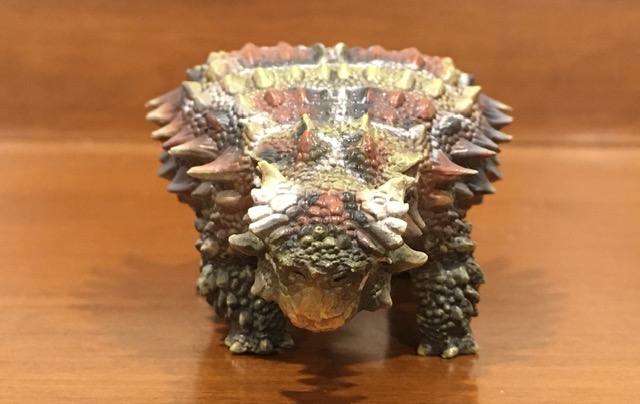
Bart’s limbs are short and sturdy and his body is wide and rather flat. He also possesses a very impressive and formidable-looking array of armour. Thick spikes protect his neck while dozens of thin, keeled osteoderms line his back. The outside of his front limbs are also covered in spikes and running along his flanks are rows of curved, blade-like scutes that gradually increase in size and sharpness as they reach the rear. The tail is similarly lined with large triangular scutes, yet terminates in a very small, flattened knob. Nowhere near as big as the weaponry found on the tails of Euoplocephalus and Zuul, but undoubtedly still capable of injuring a predator. Especially since it could have been swung faster. Pinacosaurus shared its habitat with a number of relatively small theropods, including the vicious dromaeosaurs Tsaagan and Velociraptor. They probably wouldn’t have attempted to take on adult ankylosaurs, but juveniles might have been fair game. Fossil evidence also indicates that there was at least one big tyrannosaurid in the region as well, either Tarbosaurus or Zhuchengtyrannus. Bart had better keep an eye out for Chuanzi then!
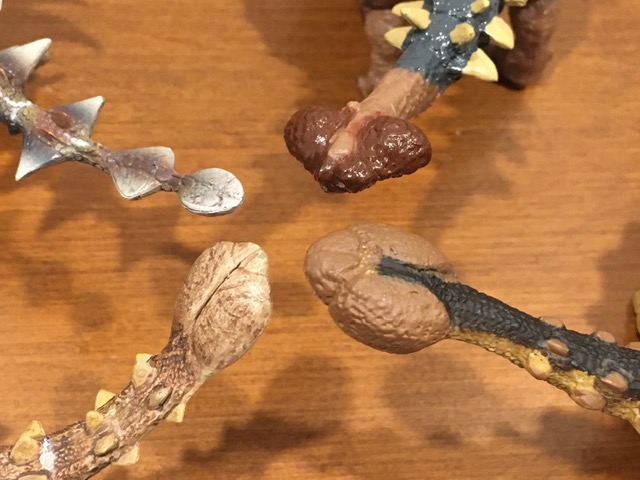
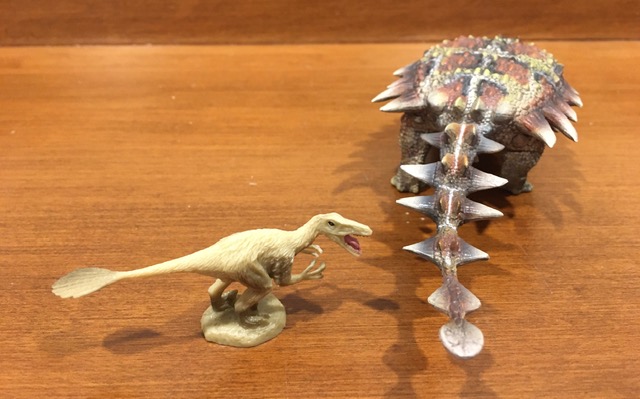
The sculpting job on Bart is once again exactly what we’ve all come to expect from PNSO: terrific. All the aforementioned armour is meticulously textured, from thick plates protecting Bart’s skull to faint grooves on his large scutes to tiny bumps making up his back armour. Like most ankylosaurs, his belly is unarmoured, but is still covered in round scales. Even the soles of his feet, which boast the correct number and arrangement of digits, are scaly. Indeed, I cannot conceive how an ankylosaur toy this size could possibly be any more detailed.
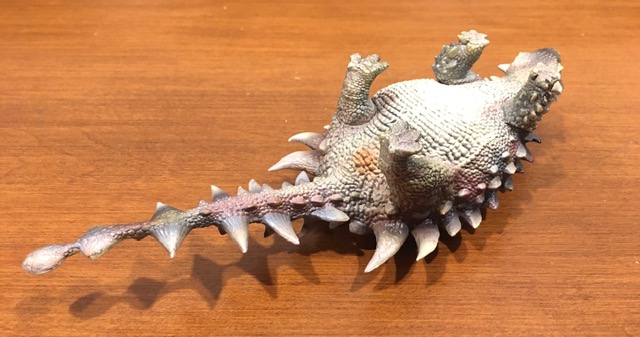
Bart the Pinacosaurus really has everything going for him: uniqueness, colouring, sculpting, and accuracy. Between him, Gavin, Isaac, and Sede, PNSO really seems to have gotten the art of crafting top quality ankylosaur toys down to a tee. Who knows, perhaps they will be the company that finally fulfills my wish for a Zuul toy in the future. In the mean time, Bart, along with the rest of the PNSO line, can be found for sale online at many different stores.

Disclaimer: links to Ebay and Amazon on the DinoToyBlog are affiliate links, so we make a small commission if you use them. Thanks for supporting us!





It’s so nice to see ankylosaurs finally getting such nice quality figures! The detailing is fantastic. Also, Bart’s stubby limbs are so cute, haha. I really like the comparison shots you included in this review, as well~
Thanks!
I really like this figure. My favorite of PNSO’s 2021 releases so far.
Favorite of their dinosaur releases*
Obviously I was more excited about the Helicoprion 🙂
Yes, I’m looking forward to your review of that one; it’s a terrific toy! Don’t see how CollectA or Safari could ever possibly top it!
I’m always a bit confused with how PNSO prices their figures. This Pinacosaurus is more expensive than the comparably sized Borealopelta and Sauropelta, and even the much larger Ankylosaurus. If the paint is what accounts for the increased price, I’d rather it had a similar coloration to the others than the more fancy coloration.
PNSO’s prices in general are exasperating.
Magnificent figure although I am not in favor of such bright colors by that ankylosaurid. Anyway, like all PNSO figures, a very interesting and cool figure.